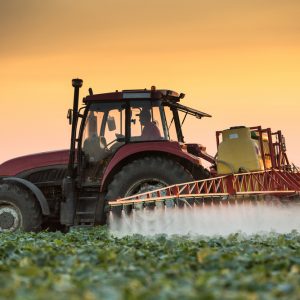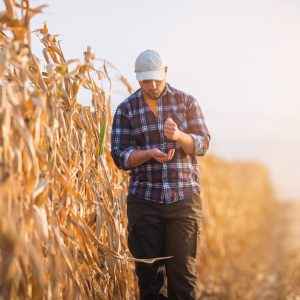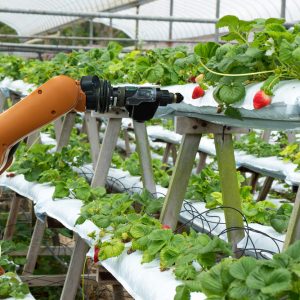Perhaps once upon a time, it would have been a joke to think that fields would be tilled, seeds sown, and crops tended and harvested by fully automated fleets of land and airborne machines. However, in light of the technological advancements of recent decades, the prospect has become something of a possibility. Technology holds the power to develop to the point that farming may become an automated process. The consequences of what seems like a simple idea are actually extensive and worth deep consideration.
Autonomous Land Vehicles

A land fully tended to by unmanned machines offers the prospect of farming day and night. Farmers will be able to achieve so much more in so much less time and with so much less effort on their part. Harvesting crops would be a matter of pre-programming the routes on driverless tractors. In fact, these types of unmanned farming vehicles are already being deployed across the globe.
Drones
It is likely that we have all seen a drone at least once. Drones are highly useful eyes in the sky. Having a drone or two — or even a swarm if necessary — buzzing across a farmer’s field is highly useful in assessing the health of the crop and helping farmers gain an idea about soil conditions. Drones are even being equipped with pesticides and herbicides to spray areas where disease is spotted. The drones are also designed to work on radio waves to overcome the issue of connectivity in rural farmland areas.
Ground-Based Sensors
Irrigation has long been an essential tool in the farming industry to deliver the water that the crops require to continue growing. Technology has changed the simple task of watering crops and has made it even simpler if you could believe it! It is now possible to have sensors placed in the ground at specific locations in the farmed land in order to monitor the water content of the soil. This will help determine whether the crops require watering or not. These sensors go a step further and assess the nutritional value of the soil, as well, in order to trigger automated fertilizer applications.
The Negative Effect

Obviously, automated farming is a serious concern in rural countries. In these areas, farming is the main economic activity and unskilled workers depend on farm-related jobs to make a living and support their families. With automated farming, jobs related to agriculture will be at risk as unmanned machinery replaces virtually all manual labor. Of course, some crops will still require manual labor, but for the majority, unemployment is highly likely.
A Need For Technological Intervention
Many may question why it is necessary to complicate the business of farming and why it would be a good idea at all, considering the fact that automated farming replaces so much manual labor. However, the bottom line is that the population is growing and the demand for food is growing with it. It is estimated that food production will have to increase by 50% by 2050 in order to support the rise in the population across the globe at its current rate. Of course, food production relies on more than speedy labor – climate change is another serious concern, but for another article, just as with the question of depletion of resources and sustainability.
Where We Are Today

We aren’t surprised that the first fully automated farm happens to be in Japan. According to reports, it is a lettuce farm and makes use of vertical space rather than horizontal space since space is such a scarcity in Japan. The hydroponic system eliminates climate concerns as the growing conditions are replicated by specially designed LED lighting and 98% of the water is recycled.
Agricultural robotics is a fast-growing sector, and after the launch of this lettuce farm, there are many following suit. In Germany, the Bosch company is developing an automated growing of seed crops and is investigating several varieties susceptibility to weeds. In England, there are engineers who are working to prove that farming without a human setting foot on the farm is now a reality. A project called the Hands Free Hectare project places focus on the use of unmanned vehicles and drones in cereal crops, cultivating the land without any manual labor. In France, as a result of a shortage of manual labor, an inventor has developed a robot designed to prune the vines of Burgundy’s vineyards. Who knows what the future holds for agriculture? But it’s clear as day that technology will play a big part in it.





